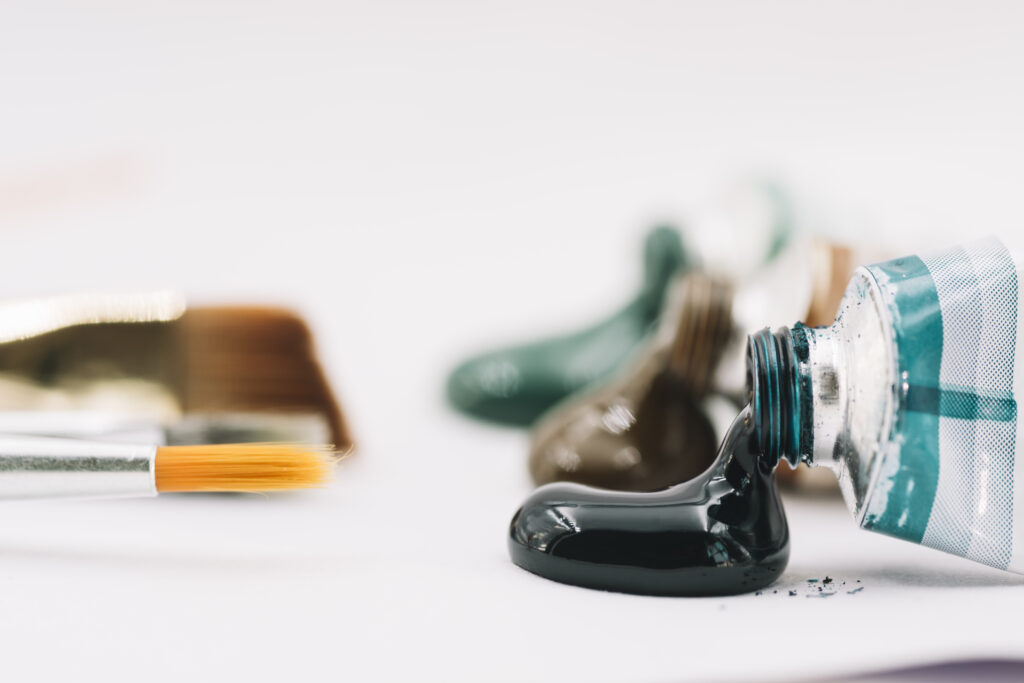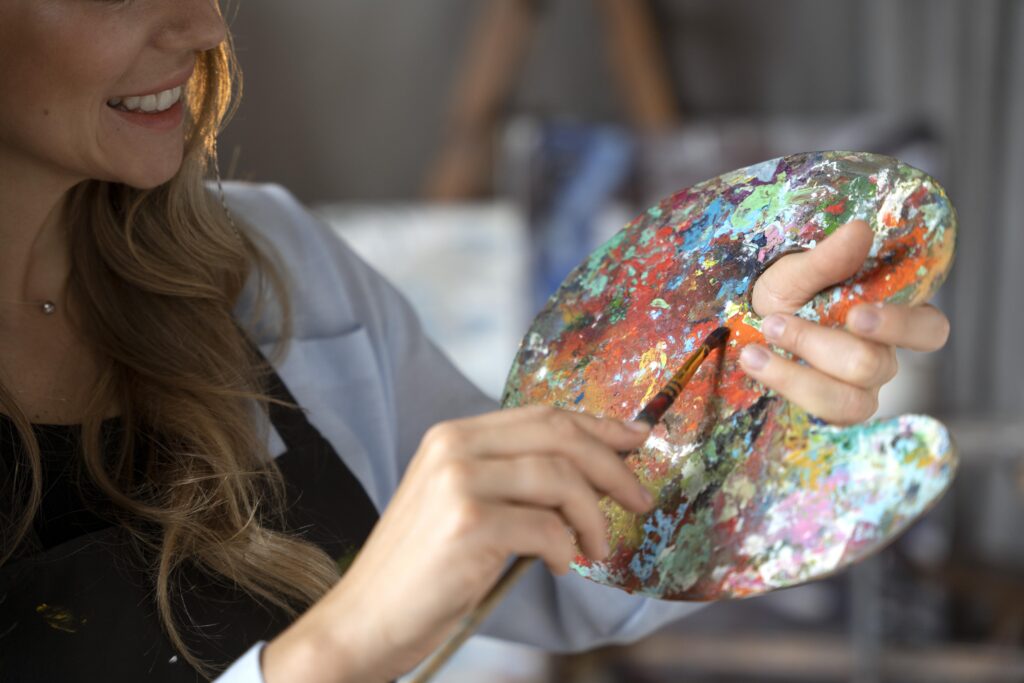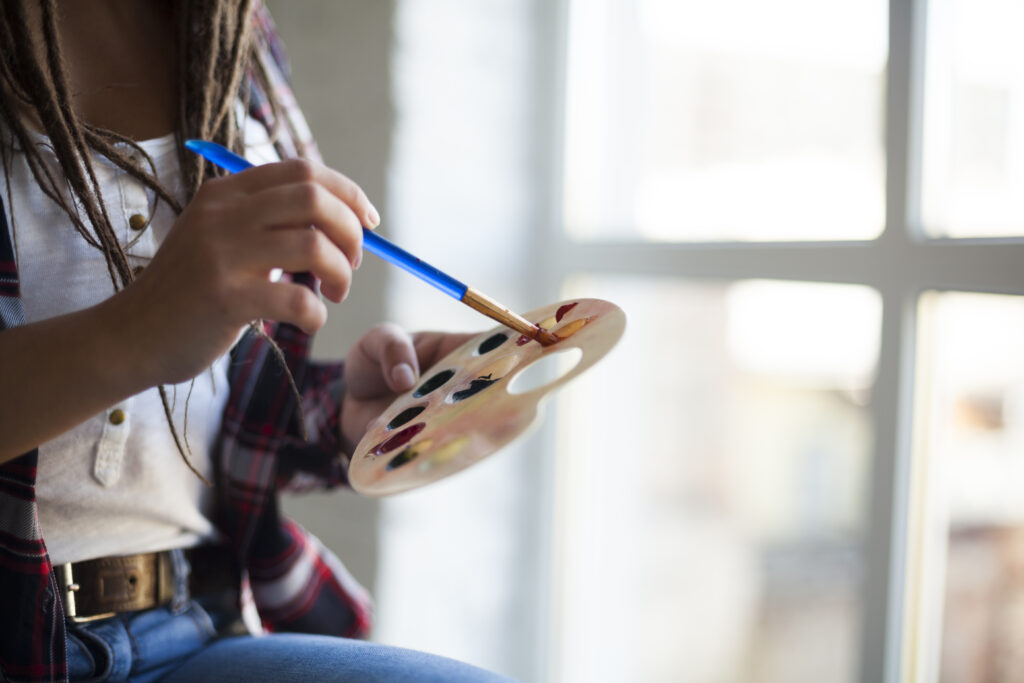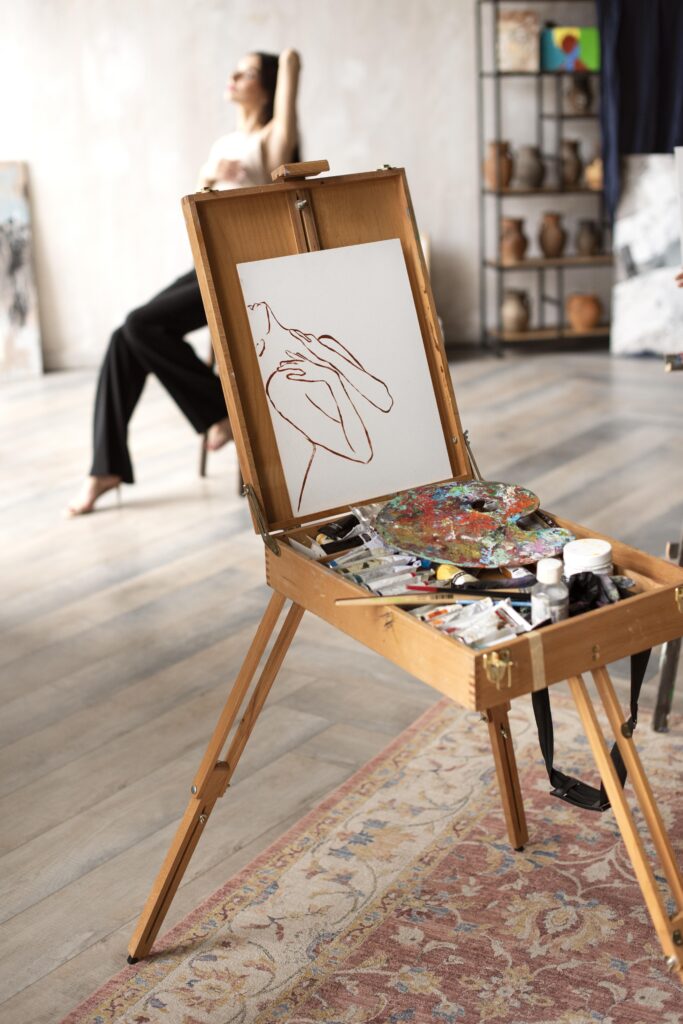Emulating Famous Art: Free Generators
The rise of free generators that mimic famous art techniques is a big deal for art and technology. These tools, powered by advanced AI, provide a unique opportunity for artists at all levels to try out and master styles that have shaped the art scene for centuries. Artists can now easily recreate the detailed brushwork of Van Gogh or the dream-like scenes of Dali. But this innovation also starts a complicated discussion about what makes art original, how copyrights work, and what creativity truly means.
Artificial intelligence in art is not just about copying past styles; it’s about opening doors to new forms of creativity. These generators encourage artists to blend traditional techniques with modern technology, creating something new. However, the ease of access to such powerful tools raises questions about the value of originality in art. It challenges us to think about where inspiration ends, and imitation begins. This conversation is crucial as we navigate the future of art in the digital age.
Key Takeaways
- AI art tools democratize creativity, inviting all to try.
- Raises questions about originality in machine-assisted art.
- Encourages community growth through innovative expression.
Free AI Art Explained
Free AI art generators like Dall-E and Midjourney have revolutionized the art world by enabling artists to create high-quality images from text prompts. These tools democratize art styles, making them more accessible to novice and seasoned artists. This accessibility is significant as it allows individuals to experiment with various artistic styles without expensive software.
Tools such as DreamStudio Lite and Craiyon further expand the possibilities for artists by providing quick access to diverse art styles, from historical to contemporary. This variety empowers artists to explore new avenues of self-expression and fosters the development of innovative concepts.
Accessing Generators

When discussing accessing generators for creating art, it’s essential to know how to find and use online tools that mimic famous art styles. Bing Image Creator and Canva stand out because they offer many features. These tools make it easy for anyone to create art that looks like well-known artists did it.
They play a significant role in making art creation accessible to everyone. Now, people without much experience in art can also create pieces that remind us of famous artworks. This is a big step towards opening the art world to more people.
Finding Online Tools
Using Bing Image Creator powered by the DALL-E 3 model, people can create art inspired by various famous techniques without cost. This tool is designed to be user-friendly, making it easy for anyone to start making their digital artwork. With a Microsoft account, users get daily chances to produce images, pushing the boundaries of their creativity. This model not only guarantees quality but also innovation in art creation.
The service is free, which means users can try out different artistic styles without spending money. Having access to it daily encourages continuous creativity and experimentation. The DALL-E 3 model, at its core, ensures the art produced is of excellent quality and originality. The AI time machine feature is a fun way to create art drawings from historical and futuristic influences. Plus, its easy-to-use interface means you can create something beautiful or thought-provoking regardless of your skill level.
This tool is significant because it democratizes the art creation, allowing more people to express themselves through digital art. It’s an exciting development for anyone interested in art, technology, or both.
Generator Features Overview
The rise of free AI art generators like Bing Image Creator has changed how we create art, especially for those who admire styles like Impressionism, Cubism, and Surrealism—these platforms, including Canva and Bing, offer tools that let users experiment with different artistic elements. You can play around with colors, brush strokes, and textures to match your creative vision through these platforms.
Using these AI tools, artists can copy famous art styles and create unique pieces. This shows AI’s significant impact on making art, making it easier for anyone to bring their ideas to life.
Mimicking Masterpieces

Choosing the right art style is crucial when trying to replicate famous artworks. This choice shapes the journey, enabling digital tools to accurately imitate the style’s distinctive features, such as color schemes and brushstrokes.
Through trial and error, artists can hone their skills with these tools. This not only allows for a faithful recreation of classic styles but also provides a deeper insight into the techniques of renowned artists.
Choosing Your Art Style
Selecting an art style to follow is about closely examining different artworks and the distinct methods their creators used. AI art generators, powered by machine learning, offer a wide range of options for those looking to create unique visual effects by adopting various artistic styles. These tools make it easy to try out and mimic the looks of famous art pieces.
Artists and hobbyists can use AI image generators to explore various artistic expressions, from the classical to the contemporary. This allows for the accurate imitation of well-known techniques. Such technology opens up the world of art styles, making the exploration and understanding of different methods accessible to everyone, not just those with a deep background in art.
Exploring Generator Capabilities
AI art generators offer a unique way to study artistic styles like Impressionism or Surrealism. These tools can analyze famous artworks, helping users recreate specific art techniques.
Users have the opportunity to immerse themselves in different artistic movements, understanding what makes each style stand out. They can replicate detailed brush strokes, color schemes, and compositions typical of well-known artists.
This process of replication provides a deeper understanding of various artistic approaches. It allows individuals to apply these styles in their work, enriching their creative expression.
Perfecting Your Technique
Engaging with the practice of imitating masterpieces helps artists sharpen their skills. They can use AI art generators to copy the unique styles of famous artists like Vincent van Gogh, Pablo Picasso, and Salvador Dalí. These tools have customizable features for adjusting brush strokes, color schemes, and textures to match specific artistic styles closely.
Creative Experimentation

Integrating AI art generators into their practice allows artists to experiment creatively with famous art techniques, marking a significant shift in how art can be created. These digital tools have become easily accessible, offering a fresh perspective on traditional art forms. They enable artists to recreate the brush strokes, color schemes, and overall compositions of some of the most celebrated artists in history. This approach mimics these styles and deepens the artist’s understanding of them.
Artists can now explore a variety of art movements, from cubism and impressionism to surrealism, broadening their creative horizons. This exploration isn’t just about imitation; it’s about adding one’s twist to well-known styles. Combining AI technology with traditional artistic methods opens up unprecedented possibilities for creative expression. It pushes artists to think outside the box and develop unique pieces that stand out.
Moreover, using AI art generators is incredibly educational. They serve as a practical resource for learning about art history and the evolution of various artistic techniques. This hands-on experience is invaluable for new and experienced artists, providing a deeper appreciation for the art that has shaped our world.
Ethical Considerations

When discussing the ethics of AI in art creation, we need to talk about who owns a piece of art made by a machine. Is it the person who made the AI, the person who used it, or none of the above? This question is crucial because it touches on copyright issues and who gets credit for the work.
Another big topic is ensuring people know if an AI created an artwork. This helps clarify what’s caused by humans and what machines produce. Being honest about AI’s role in making art is vital to maintaining trust in the art world.
These challenges force us to think deeply about how technology changes what we think about art and creativity. They remind us that as we move forward with new tools, we must also hold onto the values that make art special in the first place.
Customization Features
The world of free AI art generators has opened up new avenues for artists to tailor their creations with an extensive range of styles and color options. These tools provide the freedom to tweak elements like brush styles, colors, and textures. This customization is critical for artists aiming to mimic the unique qualities of famous art pieces accurately.
Such flexibility in customization allows for the faithful recreation of well-known art styles. It also allows artists to push the envelope, blending traditional art with modern techniques. This fusion of old and new encourages ongoing innovation in the art world, making it more dynamic and diverse.
Adjustable Style Options
Free AI art generators with adjustable style options transform how we create and interact with digital art. These tools enable users to bring to life the techniques of renowned artists, blending traditional art with digital innovation. With the power of AI, both beginners and experienced artists can now experiment with and quickly adopt famous painters’ styles.
Exploring Different Art Movements has become simpler. Users can now immerse themselves in Impressionism, Cubism, and Surrealism. It’s possible to recreate these styles accurately in your work by tweaking AI settings.
Customizing Artistic Features is a game-changer. You have the control to alter brush strokes, textures, and other elements to mirror the visual appeal of celebrated artists’ work.
Achieving a High Level of Artistic Accuracy is more feasible than ever. Tools that adjust brush size, opacity, and blending modes help craft artworks that closely resemble those of art masters.
Emulating the Signature Styles of legends like Van Gogh, Picasso, and Monet allows artists to connect with art history in a digital format. This feature bridges past artistry with present-day creativity, making it possible for anyone to create classic and contemporary pieces.
These advancements in AI art tools are not just about technology; they represent a new era of artistic expression. They offer a space where the barriers between the old and the new blur, enabling creators to explore limitless possibilities.
Color Palette Selection
The color palette selection is a standout feature in the world of free AI art generators. This tool lets artists get closer to the styles of famous painters by picking the perfect colors. It’s like having a virtual paintbox with endless options. Artists can play with these colors to closely match the vibe of well-known art movements or pieces.
The ability to choose specific color schemes makes it easier for users to create art that feels authentic. It’s not just about copying; it’s about understanding what makes each style unique through its use of color. This feature is a big help in making art that truly resonates with the essence of different artistic traditions.
AI Art Community
In the world of digital art, the AI art community is a crucial space for artists. It’s where they can show off their work and collaborate with others. This community is not just about displaying art; it’s a place for artists to connect, share advice, and push the limits of what’s possible with AI tools.
There are several benefits to being part of this community:
- Artists exchange ideas and techniques, helping each other improve and get better at creating AI art.
- Working together leads to unique artworks that might not have come to life if artists worked alone.
- Newcomers find a welcoming space to try AI tools, gaining confidence with the community’s support.
- Networking in this community can create more opportunities, helping artists grow professionally and embark on more significant projects.
The AI art community is a supportive and forward-thinking place. It allows artists to experiment, create, and share in ways that advance their skills and the field of digital art.
Versatility of Tools
Many free AI art generators are changing the game for digital artists by offering tools that make it simple to replicate famous art styles—platforms like Midjourney and Cutout. Pro lets users play with everything from Impressionism to Surrealism. Artists can now create with a precision and detail that used to require years of study.
These AI tools can even mimic the styles of legends like Picasso, Monet, and Van Gogh. This not only allows for the creation of art that looks like these masters could have made it but also opens up new ways for artists to learn about the techniques and ideas that shaped their work. Essentially, these generators are making it easier for everyone to explore and understand the depths of art history, making the art-making and learning process more accessible to all.
Potential Limitations
Despite the impressive skills of free AI art generators in mimicking renowned art techniques, they often fall short of capturing these styles’ whole essence and complexity. Users need to manage their expectations and grasp the limitations of these tools in duplicating the intricacies of famous art forms.
Free AI generators may find it challenging to replicate detailed or complex art techniques accurately. The fine details of brushwork and texture that define many historical art styles might not be fully attainable.
Capturing the level of detail and nuanced expressions in famous artworks is often challenging. These limitations in reflecting the exact depth of detail can lead to a broad emulation rather than a precise copy.
The subtle and nuanced artistic elements that contribute to the overall impact of a famous technique might be missed or inadequately represented by AI generators, impacting the authenticity of the emulation.
Users using free AI generators to mimic famous artists’ specific techniques should understand these tools’ limitations. Recognizing that while general aspects can be imitated, the mastery and complexity seen in original artworks might not always be achieved is essential.
Enhancing Artistry
Recognizing the limitations of free AI tools in capturing the essence of famous art techniques is critical for artists. While imperfect, these tools offer many options to mimic art styles like pointillism, cubism, and surrealism. This opens up a world of possibilities for artists to experiment and sharpen their skills. The process isn’t just about copying; it’s a learning experience. Artists get to understand the principles behind different art styles better.
Free AI tools allow artists to develop their creativity and skills. Even though these tools can’t fully replicate the depth of traditional art techniques, they provide a valuable space for experimentation. This experimentation isn’t just about trying to replicate famous styles. It’s also about understanding what makes these styles unique and how to apply those elements in new ways.
These AI tools represent an essential step forward in a world where technology and art constantly intersect. They provide a bridge for artists to explore historical art styles through a modern lens. This not only helps in refining their technique but also deepens their appreciation for the art.
Frequently Asked Questions
What Is the Best Completely Free AI Art Generator?
To find the best free AI art generator, consider these points:
- Assess art inspiration and creativity scope.
- Look for an easy-to-use interface.
- Ensure high-quality outputs and customization.
Choose tools that inspire, are user-friendly, and deliver quality art.
Is There a Free AI Art Avatar Generator?
- Free AI, art avatar generators, and support customization.
- They ensure privacy and easy social media sharing.
- User-friendly interfaces boost creative expression.
What Is the Most Famous AI Art Generator?
- Dall-E stands out in art creation.
- It showcases technological progress.
- Raises questions on ethical use.
Is There a Free Art AI Like Midjourney?
- AI art generators inspire new styles.
- Learning curves connect artists in communities.
- Ethical considerations shape artistic expression.
Conclusion
The rise of free AI art tools marks a significant shift in the art scene, blending human creativity with machine intelligence. These platforms open up famous art techniques to more people, sparking vital talks about the ethics of machine-made art. As more people get involved with AI art, understanding its benefits and limits becomes key, offering new opportunities for artists everywhere.
These tools allow everyone to experiment with art, breaking down barriers that once limited artistic endeavors to a select few. They bring up crucial questions about originality and the role of AI in creative processes. Engaging with these technologies wisely can enrich the art community, providing fresh avenues for expression and innovation.